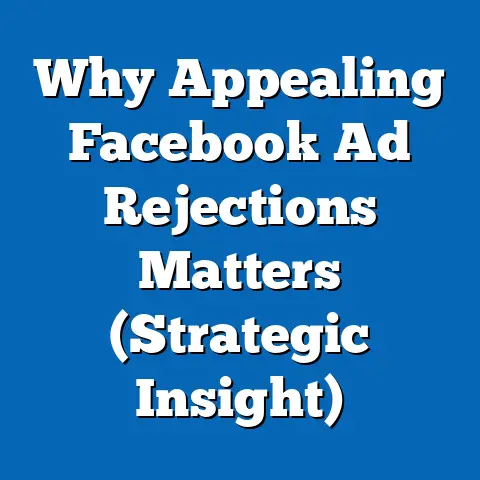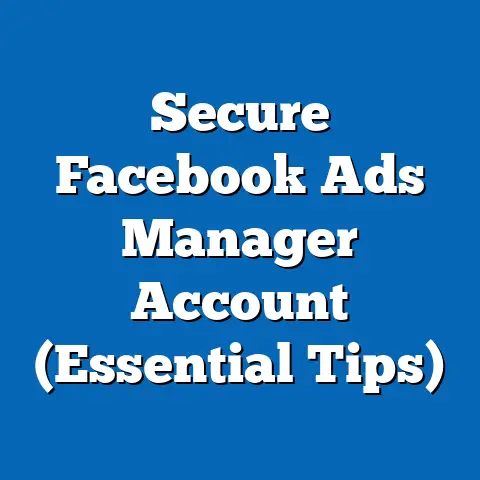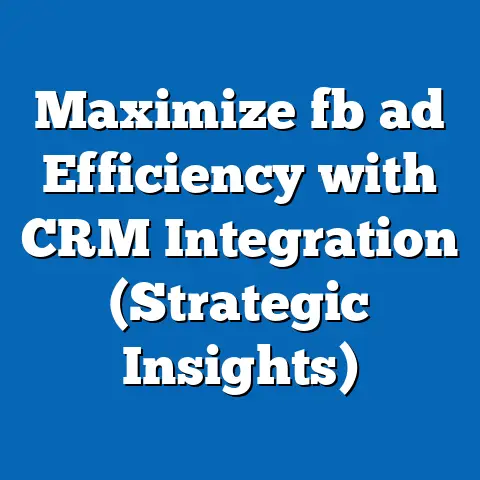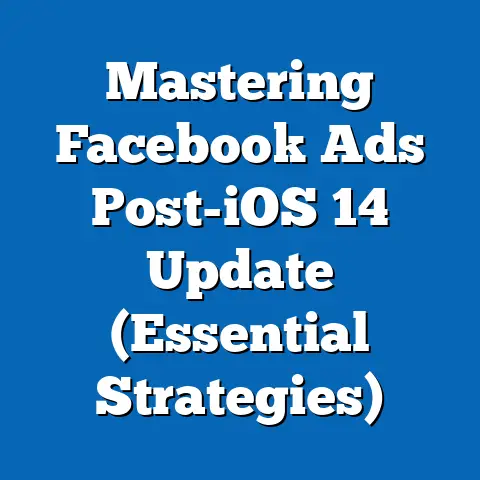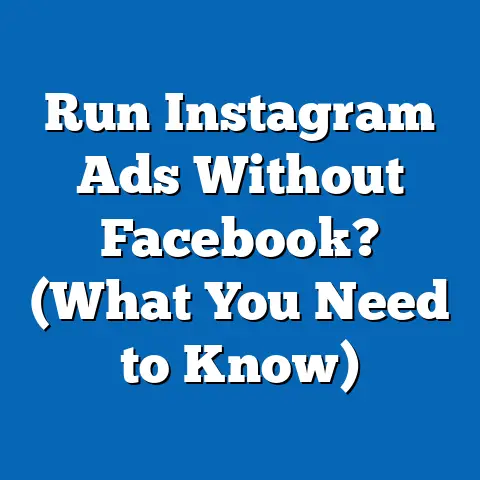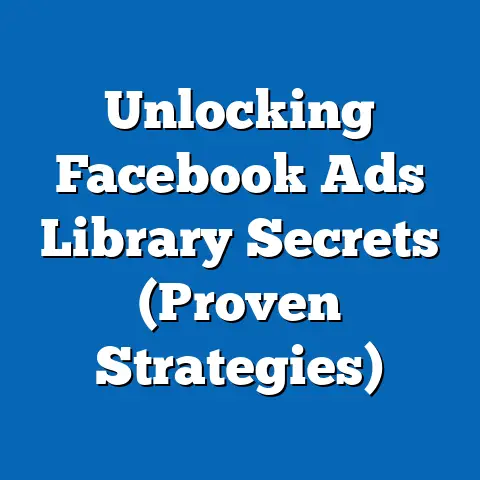Craft Irresistible Facebook Product Ads (Proven Strategies)
Craft Irresistible Facebook Product Ads: Proven Strategies
Have you ever considered what makes a product truly desirable? Sure, it’s about filling a need, solving a problem, or providing enjoyment. But there’s another layer, a psychological factor that often gets overlooked: resale value. Think about it – a product that holds its value, whether it’s a high-end watch, a designer handbag, or even a well-maintained car, is inherently more appealing. It’s not just about the present utility; it’s about the potential for future financial return.
Now, you might be thinking, “Resale value? How does that relate to Facebook ads?” Well, I believe it’s a powerful, often untapped, angle. Highlighting the long-term value of your products in your Facebook ads can significantly boost their appeal. In fact, I’ve seen firsthand how subtly mentioning resale value can pique interest and drive conversions. People are more willing to invest in something they know they can recoup some of their money on later.
Consider this: A survey by Statista found that 62% of consumers are more likely to purchase a product if they know it has a good resale value. That’s a massive chunk of your potential audience! This isn’t just about luxury items, either. Even products like baby gear, electronics, and certain types of furniture can hold their value if they are well-maintained and in demand.
In this guide, I’m going to walk you through the proven strategies I’ve used to craft Facebook product ads that not only grab attention but also convert viewers into loyal customers. We’ll cover everything from understanding your audience to leveraging Facebook’s ad features and optimizing your campaigns for maximum ROI. I’ll also share some personal experiences and insights I’ve gained along the way. So, buckle up, and let’s get started!
1. Understanding Your Target Audience
You can’t sell anything to anyone if you don’t know who they are. Plain and simple. I’ve learned this the hard way, launching campaigns based on assumptions only to watch them fizzle out. Understanding your target audience is the bedrock of any successful Facebook advertising strategy, especially when it comes to product ads.
Think of it like this: you wouldn’t use the same language to talk to a group of teenagers as you would to a group of retirees, right? The same principle applies to your Facebook ads. You need to know their interests, pain points, motivations, and even their preferred language.
So, how do you get to know your audience? Here are a few methods I’ve found particularly effective:
- Facebook Insights: This is your first port of call. Facebook Insights provides a wealth of demographic data about your existing followers, including age, gender, location, interests, and even their purchasing behavior. I spend hours poring over this data, looking for patterns and insights that can inform my ad targeting.
- Surveys: Don’t underestimate the power of direct feedback. I’ve used tools like SurveyMonkey and Google Forms to create short surveys and send them to my email list or post them on my Facebook page. Ask questions about their needs, preferences, and challenges. The answers can be gold.
- Competitor Analysis: What are your competitors doing? Who are they targeting? What kind of messaging are they using? Analyzing their Facebook ads and social media presence can give you valuable clues about your shared audience. Tools like SEMrush and Ahrefs can help you spy on your competitors’ strategies.
- Customer Interviews: Sometimes, the best way to understand your audience is to simply talk to them. I’ve conducted informal interviews with my customers over the phone or via video call. It’s a great way to get in-depth insights and build personal connections.
Once you’ve gathered enough data, it’s time to create buyer personas. A buyer persona is a semi-fictional representation of your ideal customer, based on research and data about your existing and potential customers.
Here’s an example:
Persona Name: “Savvy Sarah”
- Age: 28
- Occupation: Marketing Manager
- Location: San Francisco, CA
- Interests: Sustainable living, ethical fashion, travel, technology
- Pain Points: Busy schedule, limited budget, desire to make responsible purchasing decisions
- Motivations: Wants to look good, support ethical brands, save money in the long run
By creating detailed buyer personas like this, you can tailor your ad copy and visuals to resonate with specific segments of your audience. For example, if you’re selling a sustainable clothing brand, you might create ads that highlight the ethical sourcing and durability of your products, appealing to Savvy Sarah’s desire to make responsible purchasing decisions.
Key Takeaway: Don’t just guess who your audience is. Do your research, create buyer personas, and tailor your ads to resonate with their specific needs and interests.
2. Crafting Compelling Ad Copy
Okay, you know who you’re talking to. Now, how do you grab their attention and convince them to buy your product? The answer lies in crafting compelling ad copy.
I’ve seen ads with stunning visuals completely flop because the copy was weak. Conversely, I’ve seen ads with relatively simple visuals succeed because the copy was spot-on. The words you use are crucial.
Here are a few tips I’ve learned over the years:
-
Clear Value Proposition: What problem does your product solve? What benefits does it offer? Your value proposition should be clear, concise, and easy to understand. Don’t bury it in jargon or fluff.
- Example: Instead of saying “Our product is a revolutionary solution for streamlining your workflow,” try “Get more done in less time with our easy-to-use project management tool.”
-
Persuasive Language: Use words that evoke emotion and create a sense of urgency. Words like “limited-time offer,” “exclusive,” “guaranteed,” and “proven” can be incredibly effective.
-
Example: “Don’t miss out on our exclusive sale! Get 20% off all items for a limited time only.”
-
Storytelling: People love stories. Use your ad copy to tell a brief, engaging story that highlights the benefits of your product.
-
Example: “Imagine waking up every morning feeling refreshed and energized. Our memory foam mattress is designed to provide you with the perfect night’s sleep.”
-
Emotional Triggers: Tap into your audience’s emotions by addressing their fears, desires, or aspirations.
-
Example: “Are you tired of feeling stressed and overwhelmed? Our mindfulness app can help you find peace and calm in just a few minutes a day.”
-
Highlight Resale Value (Subtly): This is where we bring in the magic. You don’t want to be too overt (“Buy this because you can sell it later!”). Instead, focus on durability, quality, and timelessness.
-
Example: “Invest in a timeless piece that will last for years to come. Crafted from the finest Italian leather, our handbags are designed to become treasured heirlooms.”
Clear Value Proposition: What problem does your product solve? What benefits does it offer? Your value proposition should be clear, concise, and easy to understand. Don’t bury it in jargon or fluff.
- Example: Instead of saying “Our product is a revolutionary solution for streamlining your workflow,” try “Get more done in less time with our easy-to-use project management tool.”
-
Persuasive Language: Use words that evoke emotion and create a sense of urgency. Words like “limited-time offer,” “exclusive,” “guaranteed,” and “proven” can be incredibly effective.
-
Example: “Don’t miss out on our exclusive sale! Get 20% off all items for a limited time only.”
-
Storytelling: People love stories. Use your ad copy to tell a brief, engaging story that highlights the benefits of your product.
-
Example: “Imagine waking up every morning feeling refreshed and energized. Our memory foam mattress is designed to provide you with the perfect night’s sleep.”
-
Emotional Triggers: Tap into your audience’s emotions by addressing their fears, desires, or aspirations.
-
Example: “Are you tired of feeling stressed and overwhelmed? Our mindfulness app can help you find peace and calm in just a few minutes a day.”
-
Highlight Resale Value (Subtly): This is where we bring in the magic. You don’t want to be too overt (“Buy this because you can sell it later!”). Instead, focus on durability, quality, and timelessness.
-
Example: “Invest in a timeless piece that will last for years to come. Crafted from the finest Italian leather, our handbags are designed to become treasured heirlooms.”
Persuasive Language: Use words that evoke emotion and create a sense of urgency. Words like “limited-time offer,” “exclusive,” “guaranteed,” and “proven” can be incredibly effective.
Example: “Don’t miss out on our exclusive sale! Get 20% off all items for a limited time only.”
Storytelling: People love stories. Use your ad copy to tell a brief, engaging story that highlights the benefits of your product.
Example: “Imagine waking up every morning feeling refreshed and energized. Our memory foam mattress is designed to provide you with the perfect night’s sleep.”
Emotional Triggers: Tap into your audience’s emotions by addressing their fears, desires, or aspirations.
Example: “Are you tired of feeling stressed and overwhelmed? Our mindfulness app can help you find peace and calm in just a few minutes a day.”
Highlight Resale Value (Subtly): This is where we bring in the magic. You don’t want to be too overt (“Buy this because you can sell it later!”). Instead, focus on durability, quality, and timelessness.
Example: “Invest in a timeless piece that will last for years to come. Crafted from the finest Italian leather, our handbags are designed to become treasured heirlooms.”
Let’s look at a few examples of strong ad copy and analyze what makes them successful:
-
Example 1: Ad for a Luxury Watch
- Headline: “Own a Piece of History: Handcrafted Swiss Timepieces”
- Body: “More than just a watch, it’s an investment. Meticulously crafted with precision engineering and timeless design, our Swiss timepieces are built to last a lifetime and beyond. Pass it down through generations.”
- Why it works: The ad copy emphasizes the quality, craftsmanship, and longevity of the watch, subtly hinting at its resale value. The phrase “pass it down through generations” creates a sense of timelessness and enduring value.
-
Example 2: Ad for a Baby Stroller
-
Headline: “The Ultimate Stroller: Built to Last Through All Your Adventures”
- Body: “Designed with premium materials and exceptional durability, our stroller is ready for anything. From city streets to rugged trails, it’s the only stroller you’ll ever need. Plus, its classic design ensures it will always be in style.”
- Why it works: The ad copy highlights the stroller’s durability and versatility, suggesting that it will hold its value over time. The phrase “the only stroller you’ll ever need” implies that it’s a worthwhile investment.
Example 1: Ad for a Luxury Watch
- Headline: “Own a Piece of History: Handcrafted Swiss Timepieces”
- Body: “More than just a watch, it’s an investment. Meticulously crafted with precision engineering and timeless design, our Swiss timepieces are built to last a lifetime and beyond. Pass it down through generations.”
- Why it works: The ad copy emphasizes the quality, craftsmanship, and longevity of the watch, subtly hinting at its resale value. The phrase “pass it down through generations” creates a sense of timelessness and enduring value.
-
Example 2: Ad for a Baby Stroller
-
Headline: “The Ultimate Stroller: Built to Last Through All Your Adventures”
- Body: “Designed with premium materials and exceptional durability, our stroller is ready for anything. From city streets to rugged trails, it’s the only stroller you’ll ever need. Plus, its classic design ensures it will always be in style.”
- Why it works: The ad copy highlights the stroller’s durability and versatility, suggesting that it will hold its value over time. The phrase “the only stroller you’ll ever need” implies that it’s a worthwhile investment.
Example 2: Ad for a Baby Stroller
Headline: “The Ultimate Stroller: Built to Last Through All Your Adventures”
Key Takeaway: Craft ad copy that is clear, concise, persuasive, and emotionally resonant. Subtly highlight the durability, quality, and timelessness of your products to appeal to the desire for resale value.
3. Designing Eye-Catching Visuals
Visuals are the hook. They’re what stop people from scrolling mindlessly through their Facebook feed. A picture is worth a thousand words, and in the world of Facebook ads, that’s especially true.
I’ve learned that even the most brilliantly written ad copy will be ignored if the visuals are subpar. Your images and videos need to be high-quality, eye-catching, and relevant to your target audience.
Here are a few design principles to keep in mind:
- High-Quality Images and Videos: This is non-negotiable. Use professional-grade images and videos that are well-lit, in focus, and visually appealing. Avoid blurry or pixelated images at all costs.
- Color Psychology: Colors can evoke different emotions and associations. Choose colors that align with your brand and the message you’re trying to convey. For example, blue often conveys trust and reliability, while red can create a sense of urgency and excitement.
- Composition: Pay attention to the arrangement of elements within your visual. Use the rule of thirds to create visually balanced and engaging compositions.
- Branding: Your visuals should be consistent with your brand identity. Use your brand colors, fonts, and logo to create a cohesive look and feel.
- User-Generated Content (UGC): I’m a huge fan of UGC. It’s authentic, relatable, and builds trust. Feature photos and videos of your customers using your products in real-life situations.
- Lifestyle Images: Show your products in context. Instead of just showing a product on a white background, show it being used in a relevant setting. For example, if you’re selling hiking boots, show them being worn on a scenic mountain trail.
I’ve also found that A/B testing your visuals is crucial. Run different versions of your ads with different images and videos to see what resonates best with your audience. Facebook Ads Manager makes this easy to do.
Key Takeaway: Invest in high-quality visuals that are eye-catching, relevant, and consistent with your brand. Use UGC and lifestyle images to build trust and relatability. A/B test different visuals to optimize your ad performance.
4. Leveraging Facebook Ad Features
Facebook is a powerful advertising platform, but it’s only as effective as the way you use it. To truly craft irresistible product ads, you need to leverage Facebook’s ad features to their fullest potential.
Here are a few key features to focus on:
-
Ad Formats: Facebook offers a variety of ad formats, each with its own strengths and weaknesses.
- Carousel Ads: These ads allow you to showcase multiple products in a single ad, with users able to scroll through different images or videos. I’ve found them particularly effective for e-commerce businesses with a wide range of products.
- Collection Ads: These ads combine a cover image or video with a selection of products below. They’re great for creating a visually immersive shopping experience.
- Video Ads: Video is king. Video ads are incredibly engaging and can be used to tell compelling stories about your products.
-
Targeting Options: Facebook’s targeting options are incredibly granular, allowing you to reach specific segments of your audience based on their demographics, interests, behaviors, and more.
-
Custom Audiences: These audiences are created from your existing customer data, such as email lists or website visitors. They’re highly targeted and can be very effective for retargeting.
- Lookalike Audiences: These audiences are created by Facebook based on the characteristics of your existing customers. They’re a great way to reach new people who are likely to be interested in your products.
- Retargeting: This involves showing ads to people who have previously interacted with your website or Facebook page. It’s a highly effective way to bring back potential customers who didn’t make a purchase.
-
Call-to-Action (CTA) Buttons: CTAs are essential for guiding users through the purchase funnel. Use clear and compelling CTAs like “Shop Now,” “Learn More,” or “Get Offer.”
-
Example: “Shop Now” is a straightforward CTA that directs users directly to your product page. “Learn More” is a good option if you want to provide more information before asking for a sale.
- Ad Placements: Facebook allows you to choose where your ads are shown, including Facebook Feed, Instagram Feed, Messenger, and Audience Network. Test different placements to see what works best for your audience.
- Budget Optimization: Facebook offers a variety of budget optimization options, including daily budgets, lifetime budgets, and campaign budget optimization (CBO). Experiment with different options to maximize your ROI.
Ad Formats: Facebook offers a variety of ad formats, each with its own strengths and weaknesses.
- Carousel Ads: These ads allow you to showcase multiple products in a single ad, with users able to scroll through different images or videos. I’ve found them particularly effective for e-commerce businesses with a wide range of products.
- Collection Ads: These ads combine a cover image or video with a selection of products below. They’re great for creating a visually immersive shopping experience.
- Video Ads: Video is king. Video ads are incredibly engaging and can be used to tell compelling stories about your products.
-
Targeting Options: Facebook’s targeting options are incredibly granular, allowing you to reach specific segments of your audience based on their demographics, interests, behaviors, and more.
-
Custom Audiences: These audiences are created from your existing customer data, such as email lists or website visitors. They’re highly targeted and can be very effective for retargeting.
- Lookalike Audiences: These audiences are created by Facebook based on the characteristics of your existing customers. They’re a great way to reach new people who are likely to be interested in your products.
- Retargeting: This involves showing ads to people who have previously interacted with your website or Facebook page. It’s a highly effective way to bring back potential customers who didn’t make a purchase.
-
Call-to-Action (CTA) Buttons: CTAs are essential for guiding users through the purchase funnel. Use clear and compelling CTAs like “Shop Now,” “Learn More,” or “Get Offer.”
-
Example: “Shop Now” is a straightforward CTA that directs users directly to your product page. “Learn More” is a good option if you want to provide more information before asking for a sale.
- Ad Placements: Facebook allows you to choose where your ads are shown, including Facebook Feed, Instagram Feed, Messenger, and Audience Network. Test different placements to see what works best for your audience.
- Budget Optimization: Facebook offers a variety of budget optimization options, including daily budgets, lifetime budgets, and campaign budget optimization (CBO). Experiment with different options to maximize your ROI.
Targeting Options: Facebook’s targeting options are incredibly granular, allowing you to reach specific segments of your audience based on their demographics, interests, behaviors, and more.
Custom Audiences: These audiences are created from your existing customer data, such as email lists or website visitors. They’re highly targeted and can be very effective for retargeting.
Call-to-Action (CTA) Buttons: CTAs are essential for guiding users through the purchase funnel. Use clear and compelling CTAs like “Shop Now,” “Learn More,” or “Get Offer.”
Example: “Shop Now” is a straightforward CTA that directs users directly to your product page. “Learn More” is a good option if you want to provide more information before asking for a sale.
Key Takeaway: Master Facebook’s ad features to target the right audience, create engaging ad formats, and optimize your budget for maximum ROI. Don’t be afraid to experiment and test different options to see what works best for your business.
5. Analyzing and Optimizing Ad Performance
Launching a Facebook ad campaign is just the first step. The real work begins when you start analyzing your ad performance and optimizing your campaigns for better results.
I’ve seen campaigns that started off strong quickly decline if they weren’t properly monitored and optimized. You need to be constantly tracking your metrics, identifying areas for improvement, and making adjustments to your targeting, ad copy, and visuals.
Here are a few key performance indicators (KPIs) to focus on:
- Click-Through Rate (CTR): This measures the percentage of people who see your ad and click on it. A high CTR indicates that your ad is engaging and relevant to your audience.
- Conversion Rate: This measures the percentage of people who click on your ad and then complete a desired action, such as making a purchase or filling out a form. A high conversion rate indicates that your ad is effective at driving results.
- Engagement Rate: This measures the level of interaction your ad receives, including likes, comments, and shares. A high engagement rate indicates that your ad is resonating with your audience.
- Cost Per Click (CPC): This measures the amount you pay each time someone clicks on your ad. A low CPC indicates that your ad is efficient at driving traffic.
- Return on Ad Spend (ROAS): This measures the revenue you generate for every dollar you spend on advertising. A high ROAS indicates that your ad campaign is profitable.
Facebook Ads Manager provides a wealth of data and analytics that you can use to track your ad performance. Pay close attention to these metrics and look for patterns and trends.
Here are a few strategies for ongoing optimization:
- Adjust Your Targeting: If your CTR or conversion rate is low, try refining your targeting to reach a more relevant audience.
- Refine Your Ad Copy: If your ad copy isn’t resonating with your audience, try experimenting with different headlines, body text, and CTAs.
- Test New Creatives: If your visuals are becoming stale, try testing new images and videos to see what captures your audience’s attention.
- Collect Customer Feedback: Reach out to your customers and ask them about their experience with your products and your ads. Their feedback can provide valuable insights for future optimization.
Key Takeaway: Continuously monitor your ad performance, analyze your metrics, and make adjustments to your campaigns based on the data. Collect customer feedback and use it to inform your optimization strategies.
6. Case Studies of Successful Facebook Product Ads
Let’s take a look at some real-world examples of brands that have successfully crafted irresistible Facebook product ads. By analyzing their strategies, we can extract key takeaways that you can apply to your own campaigns.
-
Case Study 1: MVMT Watches
- Strategy: MVMT Watches built a massive following on social media by using high-quality lifestyle images and videos that showcased their watches in stylish and aspirational settings. They also leveraged user-generated content, featuring photos of their customers wearing their watches in everyday life.
- Resale Value Integration: MVMT watches are known for their minimalist design and durability, which contributes to their relatively high resale value. While they didn’t explicitly mention resale value in their ads, they focused on quality and timelessness, which implicitly conveyed the message that their watches were a worthwhile investment.
- Results: MVMT Watches generated millions of dollars in revenue through Facebook advertising, building a highly successful brand that was later acquired by Movado Group.
- Key Takeaways: Invest in high-quality visuals, leverage user-generated content, and focus on quality and timelessness.
-
Case Study 2: Away Luggage
-
Strategy: Away Luggage disrupted the luggage industry by creating stylish and durable suitcases that were designed for modern travelers. They used Facebook ads to target frequent travelers with ads that highlighted the features and benefits of their suitcases, such as their built-in chargers and durable polycarbonate shells.
- Resale Value Integration: Away Luggage suitcases are known for their durability and functionality, which contributes to their high resale value. They emphasized these qualities in their ads, positioning their suitcases as a smart investment for frequent travelers.
- Results: Away Luggage built a highly successful brand through Facebook advertising, becoming a major player in the luggage industry.
- Key Takeaways: Focus on solving a specific problem for your target audience, highlight the durability and functionality of your products, and position them as a smart investment.
Case Study 1: MVMT Watches
- Strategy: MVMT Watches built a massive following on social media by using high-quality lifestyle images and videos that showcased their watches in stylish and aspirational settings. They also leveraged user-generated content, featuring photos of their customers wearing their watches in everyday life.
- Resale Value Integration: MVMT watches are known for their minimalist design and durability, which contributes to their relatively high resale value. While they didn’t explicitly mention resale value in their ads, they focused on quality and timelessness, which implicitly conveyed the message that their watches were a worthwhile investment.
- Results: MVMT Watches generated millions of dollars in revenue through Facebook advertising, building a highly successful brand that was later acquired by Movado Group.
- Key Takeaways: Invest in high-quality visuals, leverage user-generated content, and focus on quality and timelessness.
-
Case Study 2: Away Luggage
-
Strategy: Away Luggage disrupted the luggage industry by creating stylish and durable suitcases that were designed for modern travelers. They used Facebook ads to target frequent travelers with ads that highlighted the features and benefits of their suitcases, such as their built-in chargers and durable polycarbonate shells.
- Resale Value Integration: Away Luggage suitcases are known for their durability and functionality, which contributes to their high resale value. They emphasized these qualities in their ads, positioning their suitcases as a smart investment for frequent travelers.
- Results: Away Luggage built a highly successful brand through Facebook advertising, becoming a major player in the luggage industry.
- Key Takeaways: Focus on solving a specific problem for your target audience, highlight the durability and functionality of your products, and position them as a smart investment.
Case Study 2: Away Luggage
Strategy: Away Luggage disrupted the luggage industry by creating stylish and durable suitcases that were designed for modern travelers. They used Facebook ads to target frequent travelers with ads that highlighted the features and benefits of their suitcases, such as their built-in chargers and durable polycarbonate shells.
Key Takeaway: Study successful Facebook product ads and identify the strategies they used to resonate with their audience and drive conversions. Adapt these strategies to your own campaigns, taking into account your specific products and target market.
Conclusion: The Future of Facebook Product Advertising
The world of Facebook advertising is constantly evolving. New features are being introduced, algorithms are changing, and consumer behavior is shifting. To stay ahead of the curve, you need to be adaptable, innovative, and always willing to experiment.
Here are a few emerging trends to keep an eye on:
- Increased Personalization Through AI: Facebook is increasingly using artificial intelligence to personalize ads and improve targeting. Expect to see more sophisticated AI-powered tools in the future.
- The Growing Importance of Video Content: Video is becoming increasingly dominant on Facebook. If you’re not already using video in your ads, now is the time to start.
- Shifts in Consumer Behavior: Consumers are becoming more savvy and discerning. They’re less likely to be swayed by blatant advertising and more likely to respond to authentic and relatable content.
As you navigate the ever-changing landscape of Facebook advertising, remember that the key to success is to focus on resonating with your audience and highlighting the value of your products. By understanding their needs, crafting compelling messages, and leveraging Facebook’s powerful tools, you can create irresistible product ads that drive sustained success in your advertising efforts.
And don’t forget that subtle nod to resale value. It’s a powerful psychological trigger that can set your ads apart and make your products even more desirable.
So, go out there, experiment, and create some amazing Facebook product ads! I’m confident that with the strategies I’ve shared in this guide, you’ll be well on your way to achieving your advertising goals. Good luck!

